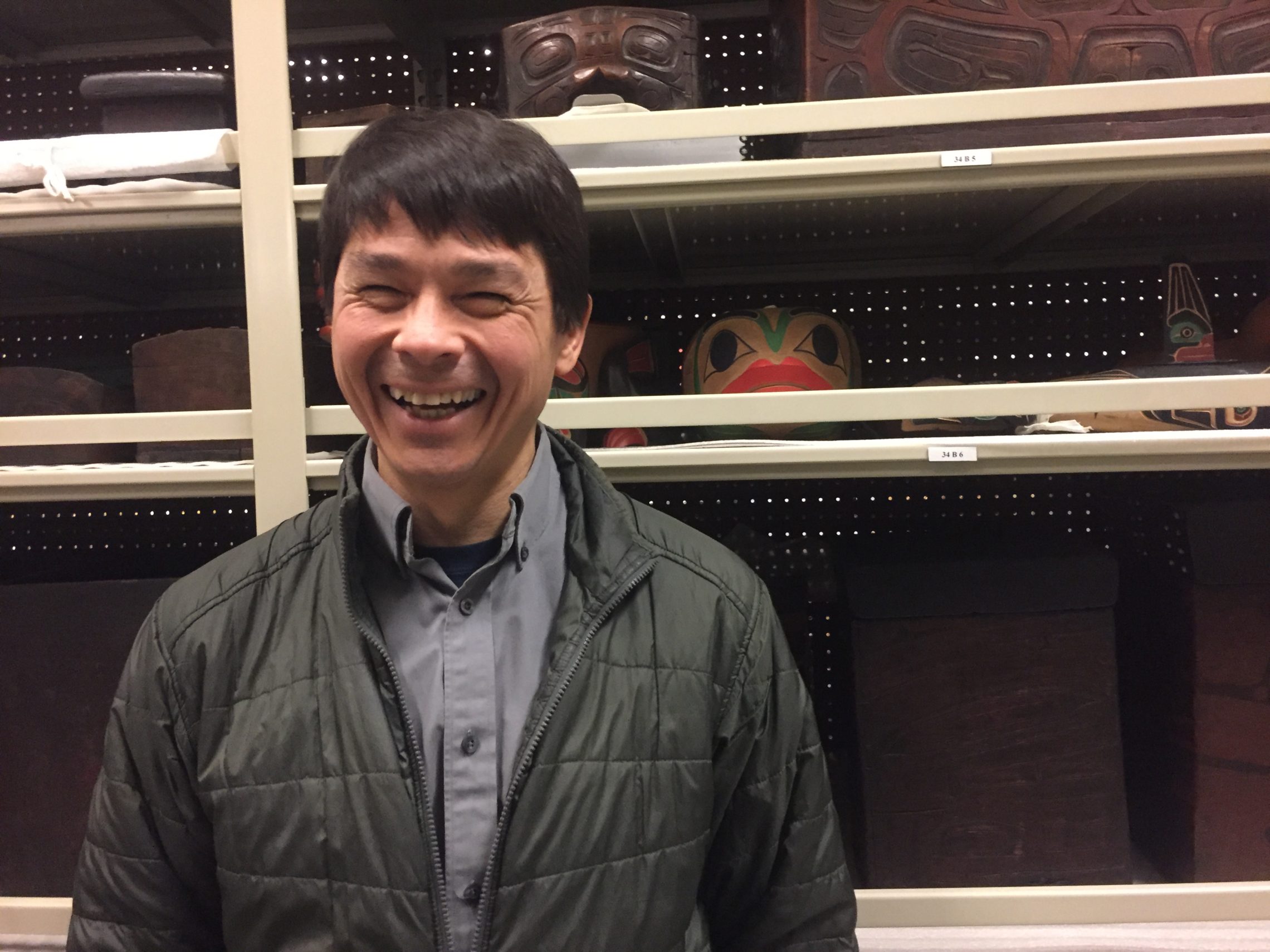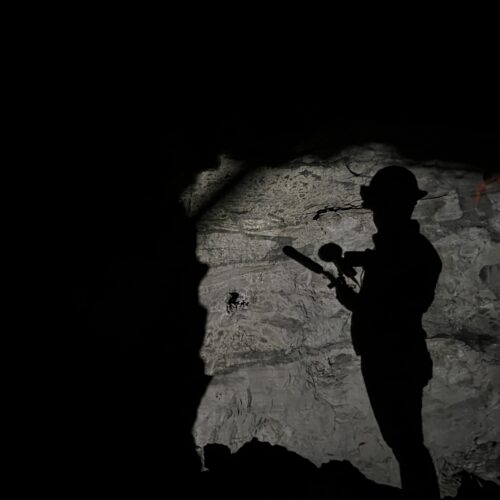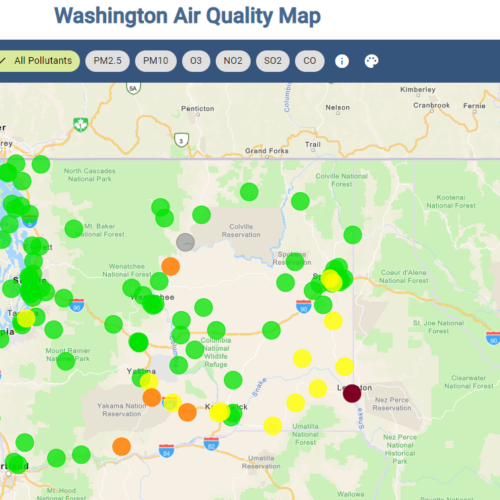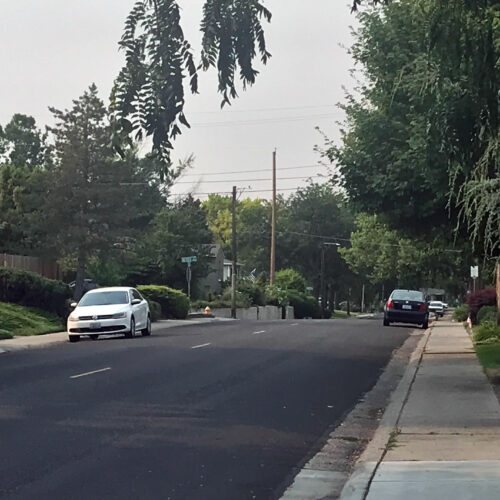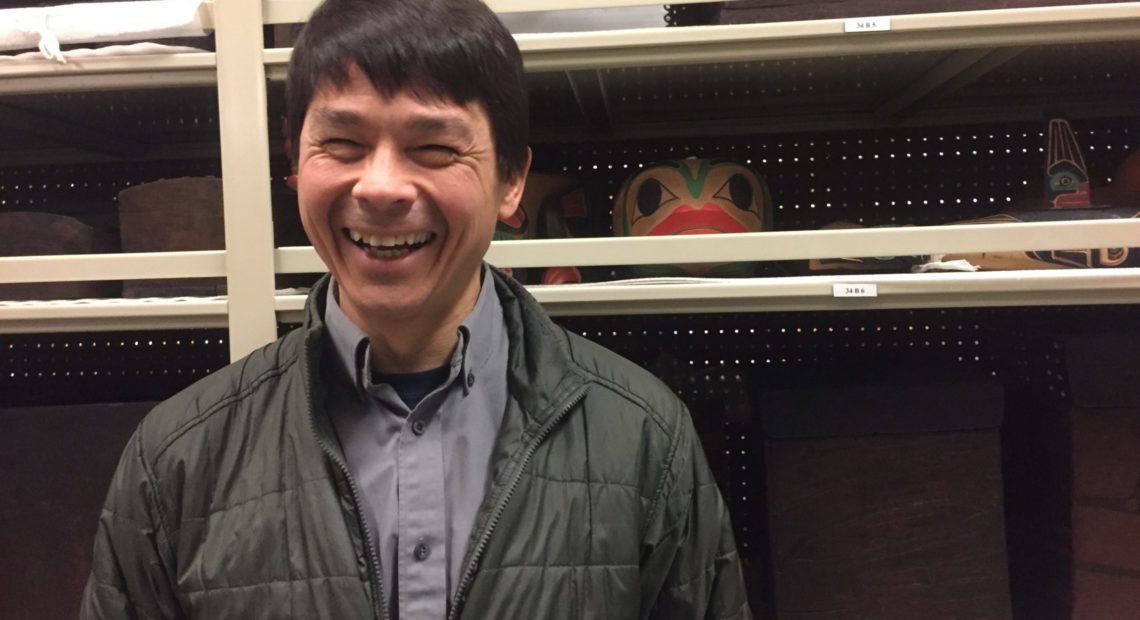
Northwest Museums Revive Native American Artifacts To Tell Richer Stories
Listen
Museum curators in the Northwest are now working to update exhibits that focus on the region’s indigenous people. They are trying to do that in a way that both modernizes stories of indigenous people and tells them more truthfully.
The last time you went to a natural history museum, you may have seen glass cases filled with the costumes, jewelry and tools of the native people who are still living in the Northwest.
“Entering a museum and seeing artifacts or seeing objects from my tribe is heartbreaking,” said Polly Olsen, a member of the Yakama Nation. She’s also the tribal liaison for the Burke Museum in Seattle.
She said placing Native American objects—like a handmade huckleberry basket—behind glass takes away its life.
“I was raised that these baskets need to be fed as well as human beings, so we have family baskets that we take out into the berry fields and pick with us,” Olsen said. “You feed them, they have a spirit. They are alive.”
In anticipation of a brand-new Burke Museum opening next year, Olsen has been meeting with elders from tribes across the region. She wants to make sure new exhibits depict that living spirit.
Telling A More Complete Story
For example, instead of simply displaying a basket with the date it was acquired, the object should tell a story, Olsen said.
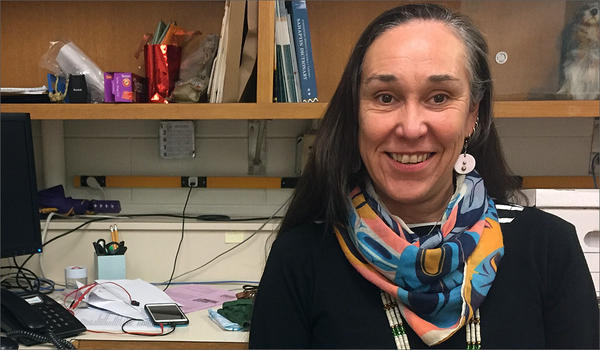
Polly Olsen is the first-ever tribal liaison at the Burke Museum. A member of the Yakama Nation, she was hired last year to consult with tribal elders across the Northwest so that their stories could better be told when a new Burke museum opens its doors next year. CREDIT EMILY SCHWING / NORTHWEST NEWS NETWORK
“We would like to change that to be a statement of ‘a Colville basket that is used to gather huckleberries during the late summer.’ And you have an understanding of what the item is used for, where currently you look at the items and you don’t fully understand its purpose,” she said.
This is the kind of rethinking that’s starting to take hold in museums that house Native American objects. Curators are ready to tell a more complete story than what’s been told in the past.
It’s what is happening at a museum in British Columbia that houses an exhibit about the Sinixt people, who once occupied a huge stretch of land from the Colville Reservation in northeastern Washington all the way north to Revelstoke, British Columbia.

At the Touchstones Nelson Museum of Art and History in Nelson, British Columbia, Executive Astrid Heyerdahl says it’s time to tell a more complete story of what has happened to the tribes in the region since white settlers arrived. CREDIT EMILY SCHWING / NORTHWEST NEWS NETWORK
“It’s very clear that this land was occupied for thousands and thousands of years before settlers came,” Touchstones Nelson Museum of Art and History Executive Director Astrid Heyerdahl said.
She pointed out a row of glass cases on the second floor of the museum that hold all kinds of items that once belonged to the Sinixt.
In 1956, the Canadian government officially deemed the Sinixt ‘extinct.’ Currently, 4,000 members of the tribe live in Washington state, pushed off their traditional lands as settlers migrated west.
But the story isn’t clear when you visit this museum.
“People really want to see themselves represented and represented properly, with honesty, with truth, recognizing the true history of this area and bringing in opportunities to talk about current events in relationship to history,” Hjerdahl said.
Hjerdahl is working with the community to modernize that story by 2021. Like at the Burke, they are also consulting with tribal members.
Injustice And Generational Trauma
There are some very painful stories in indigenous history. Many Native people suffer from generational trauma. There’s the controversial efforts of missionaries to bring Christianity to tribes, and there’s the ugly truth of how indigenous people were displaced both from their lands and their culture.
“We will talk about language suppression, we will talk about displacement, we will talk about reservations,” said Sven Haakanson, curator for North American Anthropology at the Burke. He’s also Alaska Native.
He said the list of injustices is long, but they don’t complete the main story.
“That’s what we want to share is the resilience of all communities,” Haakanson said. “Even under the circumstances that we have been put, there is so much resilience and using the objects as a way to get communities to see that and also then take ownership of it, so they own it, not us,” he said.
Correction: The original story from Northwest News Network misspelled Astrid Heyerdahl’s name.
9(MDAyOTk4OTc0MDEyNzcxNDIzMTZjM2E3Zg004))
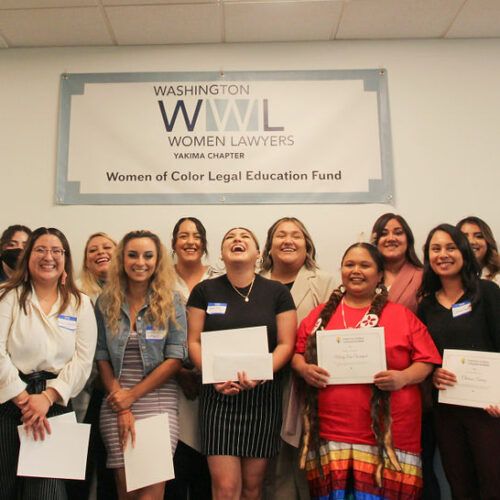
Yakima Groups Help More Women Of Color Become Lawyers
Yakima women of color received 19 scholarships to support them in continuing their legal education. Photo: Pataathla Sutterlict Listen (Runtime 1:39) Read More women of color want to become lawyers
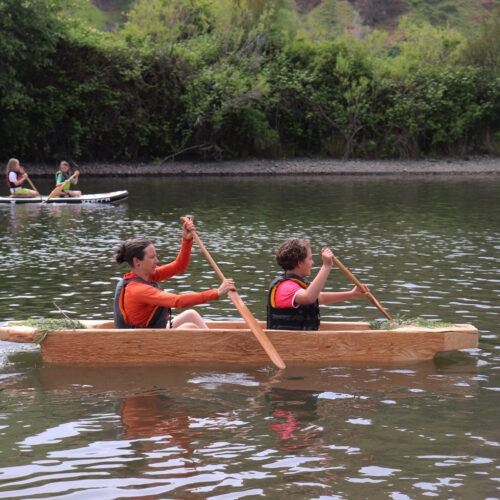
Carving Out Lessons From A Canoe
Building a canoe is about learning and community-building for everyone involved. That’s what one Nez Perce man said before launching a canoe that was handmade with the help of fourth graders into the water on Tuesday.
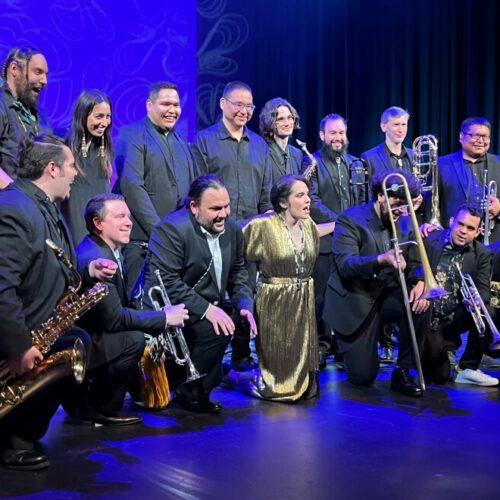
To ‘Honor The Shoulders We Stand On:’ Big Band Premieres With Nod To History Of Native Jazz Musicians
A scheme to entertain a 4-year-old youngster in Spokane by playing a jazz album nearly three decades ago produced a cascade of aftereffects that culminated on stage in Olympia, Washington, this month with crescendos of horns and multiple standing ovations. During the debut of a 16-piece, all-Indigenous big band, the performers on stage hearkened even further back in history to celebrate the little-known, but long line of Native jazz musicians and big bands.

